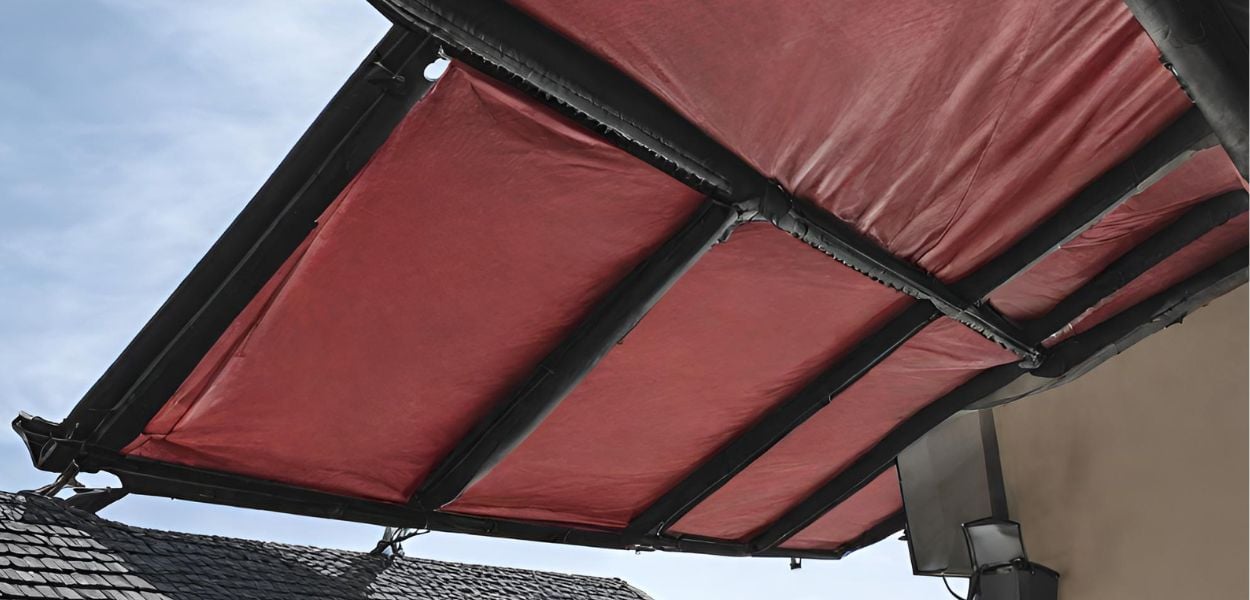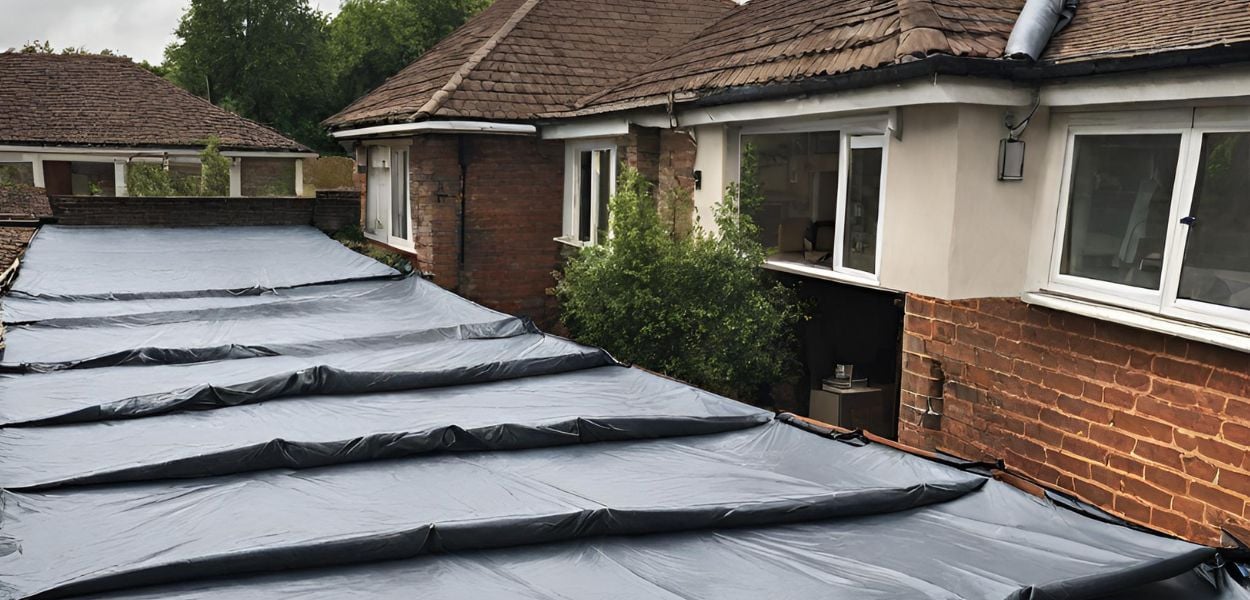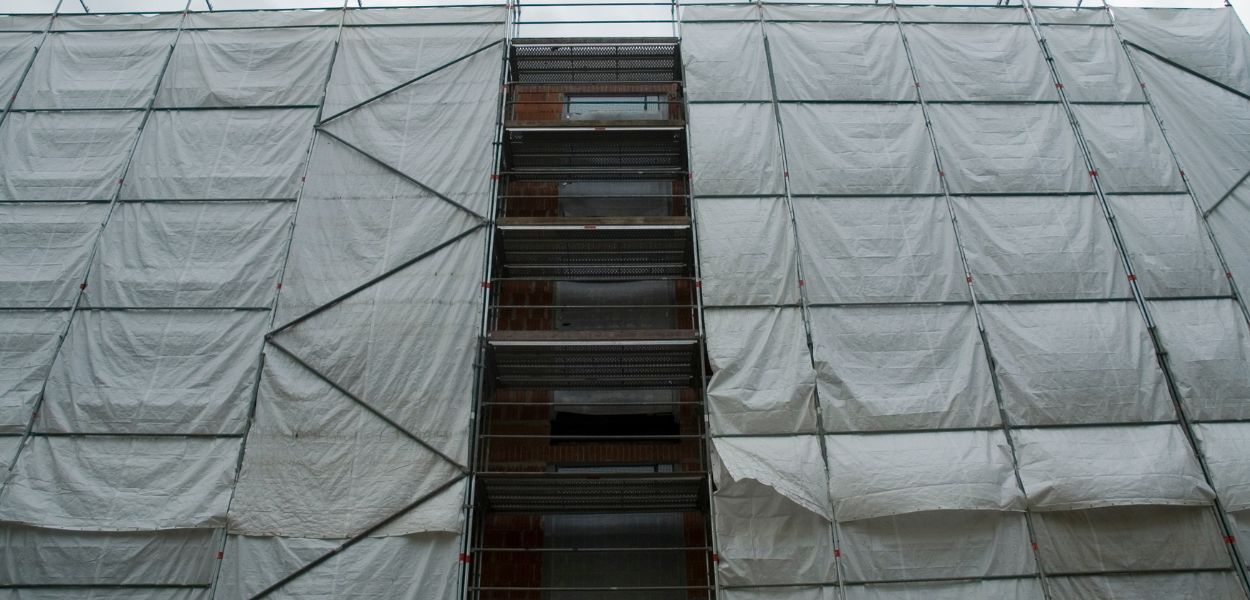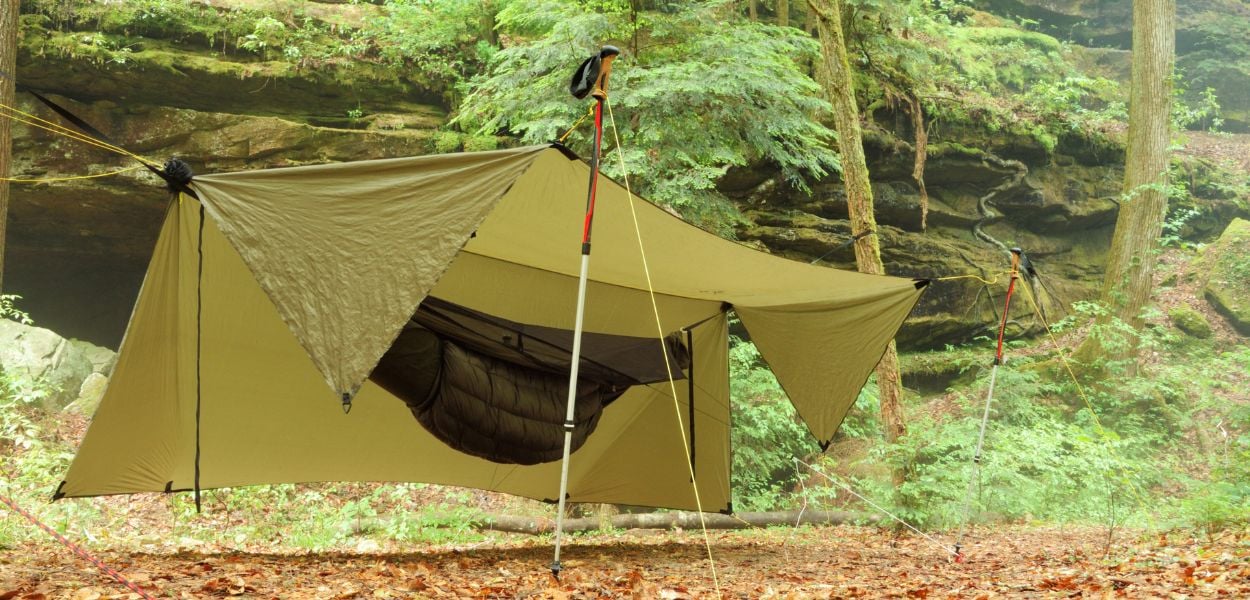Whether you're looking for lightweight tarps, medium weight tarps or heavy duty tarps, it is important to ensure you choose the one that suits your requirements.
Consider the different properties of your project.
-
Is the tarp being used to cover damage?
-
Is it being used to wrap a partially-constructed roofing structure?
-
Is there risk associated with the protection not being 100% waterproof?
-
Is it being used to protect a depleting roof during adverse weather conditions?
In this article, we look at different types of tarpaulins and how they are specifically designed to suit a range of different needs.

Criteria for a Good Roofing Tarp
Material Quality:
-
Opt for waterproof tarp made from polyethylene, polyester, or canvas.
-
Ensure the material is waterproof and resistant to UV rays to withstand prolonged exposure.
Size and Coverage:
-
Choose a tarp that provides ample coverage for your specific roofing project.
-
Consider factors like dimensions, shape, and whether you need a standard or custom size to attach.
Grommets and Reinforcements:
-
Look for roof tarp with a reinforced edge and strategically placed grommets for reliable tie-down options.
-
Avoid heavy duty tarp that doesn't include reinforcements such as a reinforced hem, to reduce the risk of tearing and enhance the tarp's overall strength.
Weather Resistance:
- Consider the climate of your region when selecting a tarp. Not all tarps are the same, for example, some are designed to withstand; extreme temperatures, heavy winds/heavy storms and heavy rain.
Ease of Installation:
- Opt for roof tarps with user-friendly features like reinforced corners, easy-to-use fasteners, and clear instructions for hassle-free installation.

Types of Roofing Tarp Materials
Polyethylene Tarps:
-
Poly Tarp is ideal for temporary fixes and emergency situations.
-
Lightweight and cost-effective roof tarps.
-
Poly tarps are also waterproof and rust resistant covering.
Canvas Tarps:
-
Canvas roof tarps are known for their durability and breathability.
-
Suitable for long-term use and mildew proof.
-
Only waterproof by design, increasing risk of leaks.
Vinyl Tarps:
-
Heavy-duty and waterproof vinyl roof tarps are perfect for extended use.
-
Resistant to abrasion, tears, and harsh weather conditions.
-
Vinyl tarps also have a higher strength quotient than poly tarps.
Residential Roofs:
-
Opt for UV-resistant polyethylene roof tarps for a short-term matter.
-
Consider durable vinyl tarps for long-term protection.
Commercial and Industrial Use:
-
Choose heavy-duty vinyl or poly roof tarps for durability and strength.
-
Look for flame-resistant options for industrial settings.
Garden Building Roofs:
-
Use breathable canvas tarps to prevent moisture build-up.
-
Ensure UV resistance to protect plants and equipment.
Flame-Retardant Tarps:
-
Essential for industrial settings and areas prone to fire hazards.
Thermal Insulation Tarps:
-
Designed to regulate temperature and provide energy efficiency.
Selecting the Best Tarps for Specific Needs
Tarp Selection FAQs
What type of tarp is best for a roof?
Ultimately, the best type of roof tarps depend on the specific requirements of the situation, however, lighter tarps are not recommended for roof protection. For example, you may be having your roof shingles replaced, leaving the plywood exposed, therefore, it's essential to consider factors such as quality, durability, weather resistance, and the intended duration of use when making your selection.
What is the most durable tarpaulin?
The durability of roof tarps depends on the specific materials used in its construction. Among the various types available, heavy-duty vinyl tarpaulin is considered the most durable. Vinyl roof tarps are known for their exceptional strength and resistance to wear and tear.
Both tarpaulins are also waterproof, UV-resistant, and able to withstand harsh weather conditions, making them suitable for long-term and heavy-duty roof protection.
Can i cover my shed roof with tarpaulin?
Yes, covering your shed roof with a tarpaulin is a viable and common solution, especially for temporary repairs or protection against harsh conditions. Tarpaulins are multi purpose and can provide a quick and cost-effective way to shield your shed from rain, snow, strong winds and even a storm.
Usage and Maintanance FAQs
Tarping a metal roof is a crucial step to temporarily protect your property from leaks and further damage in case of a roofing emergency or during repair work. Here's a step-by-step guide on how to tarp a metal roof:
List of equipment required:
-
Roof Tarp: Measure to ensure it is appropriately sized to cover the damaged or exposed area.
-
Ladder: To access the roof safely.
-
Work Gloves: For protection while handling the tarp.
-
Bungee Cords or Ropes: For securing the tarp to the roof (these can be purchased from most hardware stores).
Tarping a metal roof requires careful attention to detail to ensure that the tarp provides effective temporary protection. By following these steps, you can minimise the risk of further damage and protect your property until permanent repairs can be made.
*Be sure to clear all debris from the damaged area, before attaching the tarp to the roof. Also take note of the integrity of the wall you are using to support your ladder before climbing, to avoid injury.
How long do roof tarps last?
The lifespan of a tarp on a roof can vary significantly based on several factors, including the quality of the tarp, environmental conditions such as ongoing wet weather, and the specific usage. How you attach the tarp also plays a crucial role, even the best tarps will fail if they are not fixed correctly.
It's important to note that the actual lifespan of a tarp on a roof can vary based on the specific circumstances. Regular inspections, prompt repairs, and replacement when necessary are crucial to maintaining the effectiveness of the tarp and preventing further damage to the roofing structure below.
Will a tarp stop a roof leak?
Using a tarp can be valuable to stop a roof leak and prevent a build up of mold and mildew until permanent repairs can be made. Tarps are designed to provide a barrier against rain and other elements, offering a quick and immediate fix in emergency situations.
While a tarp can be effective in emergency situations, it's not a permanent solution. Keep in mind that the effectiveness of a tarp as a temporary fix may vary based on the severity of the damage and the type of tarp used.

Practical Tips and How Tos
Measure and Cut the Tarp:
- Measure the dimensions of the area to be covered and cut the tarp accordingly, leaving some overhang on all sides.
Position the Tarp:
-
Carefully climb onto the roof and position the tarp over the affected area. Make sure the tarp covers the entire damaged section.
Secure the Tarp:
Use ropes or bungee cords to secure the tarp tightly to the roof, particularly to avoid any accumulation of mold. Start at one corner and work your way around, ensuring a snug fit. Tie knots securely.
-
If possible, anchor the ropes or cords to stable parts of the roof, such as vents or chimney stacks.
Avoid Punctures:
-
Be cautious when walking on the tarp to prevent punctures. If possible, distribute your weight evenly and wear soft-soled shoes.
Smooth out Wrinkles:
- Smooth out any wrinkles or air pockets in the tarp to ensure water doesn't collect and cause additional damage.
Check Regularly:
-
Periodically check the tarp to ensure it remains secure and is effectively preventing leaks. Adjust or reinforce as needed.
Permanent Repairs:
-
Remember that a tarpaulin is a temporary solution. Once weather conditions permit, make permanent repairs to the roof. Consult a professional roofer if necessary.
Document Damage:
-
Document the damage by taking photos if you plan to file an insurance claim. This can help with the claims process.
Environmental Considerations
-
Choose tarps that are environmentally-conscious.
-
Dispose of old tarps responsibly, considering recycling options.
-
Consider reusing your tarp once the project is finished for something more domestic, did you know tarps can be used as tents for camping as well as other forms of shelter?

The environmental impact of tarpaulins
The environmental impact of tarps varies based on the materials used. While some tarps are eco-friendly and recyclable, others may contain plastics that contribute to pollution. Proper disposal and selecting more sustainable tarps can help minimise environmental impact.
Recycled materials:
-
Look for tarps that are recyclable, such as recycled polyester or other recycled fabrics.
Biodegradable plastics:
-
Some tarps are made from biodegradable plastics that break down more easily over time, reducing their impact on the environment.
Hemp-based tarps:
-
Hemp is a sustainable and fast-growing plant, and tarps made from hemp fibres can be a more eco-friendly option.
Polyethylene tarps:
-
If you prefer synthetic tarpaulins, look for poly tarps made with recycled content, as this reduces the demand for new raw materials.
Innovations in Tarp Technology
-
Biodegradable tarps
-
Recycled tarps
-
Tarps with lower environmental footprints
Conclusion
Selecting the right roof tarp involves careful consideration of size, weight, and specific needs. Whether it's for residential, commercial, or specialised storm front purposes, the perfect roof tarp can provide reliable protection against the elements.
Whether you're in construction, working on a medium-sized roofing repair, or looking for cover for a domestic project, it is good to remember that while they are multi purpose, tarpaulins still have limitations.
Keeping the criteria, types, and tips we have discussed, in mind will ensure your roofing tarp meets the highest standards of both quality and performance.
